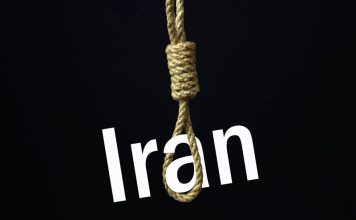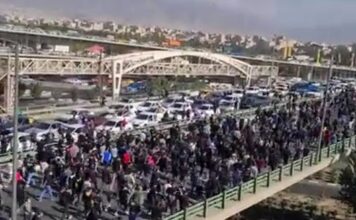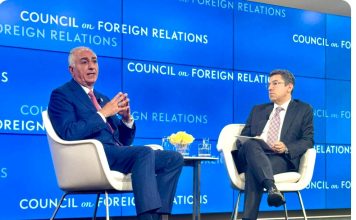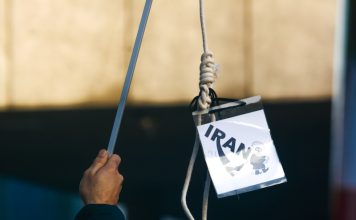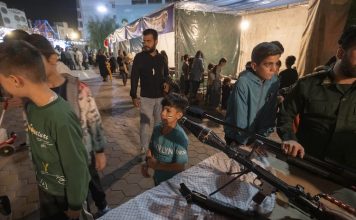Barzin Hamzeh-Zadeh, a 16-year-old Kurdish boy arrested in November 2022 during the ‘Woman, Life, Freedom’ protests in Iran, died on Jan. 4 of injuries sustained while being tortured in prison, the human rights organization Hengaw has said.
Sardasht; Barzin Hamzezadeh, one of the Kurdish children arrested in the Jin, Jiyan, Azadi movement, died as a result of injuries caused by torturehttps://t.co/9LYsGrReVv
— Hengaw Organization for Human Rights (@Hengaw_English) January 3, 2024
Hengaw monitors human rights violations in Iran with a focus on Kurdish areas in the country and has volunteers working for it in Germany, Kurdistan and Norway.
The video captures the initial moments of Barzin Hamzehzadeh, a Kurdish child, being apprehended by two Iranian security forces. Despite one child managing to escape, Barzin was forcibly subdued by the agents. Unable to place him in their vehicle, the agents maintain control… pic.twitter.com/xbwbUDbWBM
— Hengaw Organization for Human Rights (@Hengaw_English) January 7, 2024
Barzin, who was 15 years old at the time of his arrest, told his friends while in detention that officials prevented him from using the bathroom for long periods of time and gave him contaminated water to drink, leading to acute dehydration and severe abdominal pain. Security forces are also alleged to have beaten Barzin so severely that he lost both kidneys.
Concerned that the teenager could die from his ill treatment, officials sent Barzin to a medical center in Urmia, a city in the West Azerbaijan province of Iran, according to Hengaw. There, his condition worsened, and he was transferred to a hospital in Tehran. Doctors at the hospital diagnosed Barzin with an autoimmune disorder, and recommended dialysis as a form of treatment following suspected kidney failure, Hengaw added.
Medical research has found that autoimmune disorders can be brought on by torture and other deeply traumatic events.
The details of Barzin’s experience in the detention center, subsequent medical treatment and a video showing his arrest were published by Hengaw in a Jan. 7 post on the social media platform X, formerly Twitter.
“Doctors have emphasized that a disorder at this level, without the existence of genetic and hereditary factors, can only be caused by continuous and severe physical and mental pressures,” the post said.
The video showing Barzin’s arrest on a street in Iran includes a series of distressing scenes, including officers dragging him on the ground and threatening him. Several members of Iran’s security forces can be seen surrounding the teenager and forcing him into a vehicle.
Amnesty International documented the systemic torture of children in Iran’s prisons and detention centers in a March 16 report. The organization found that children as young as 12 were flogged, endured electric shocks to their genitals and were subjected to sexual violence in the regime’s crackdown on nationwide anti-government protests.
The human rights organization also found that children were routinely given unsafe water to drink and denied access to toilets and hygiene facilities.
“They gave us electric shocks, hit me in my face with the back of a gun, gave electric shocks to my back and beat me on my feet, back and hands with batons. They threatened that if we told anyone, they would [detain us again], do even worse and deliver our corpses to our families,” a boy speaking to Amnesty said.
Iran Protests Have Caused Deaths of Staggering Number of Children
The torture and killing of children and young people by Iran’s security forces continues despite an international social-media outcry following the publication of Amnesty’s report.
Mahmoud Rakhshani, a 19 year-old boy from the Baluch community, was tortured to death on Dec. 11 by intelligence agents of the Islamic Revolutionary Guard Corps (IRGC), according to a Dec. 13 Hengaw report.
Mahmoud was arrested on Sept. 3 by IRGC officials after they accused the family of being in possession of a weapon. No weapon was ever found and the search conducted at his father’s home was carried out without a warrant.
The injuries that Mahmoud sustained while being subjected to severe torture in custody resulted in the teenager losing consciousness. Mahmoud spent three months in a coma before succumbing to his injuries at the Amiralmomenin hospital in Zabol, a city in the Sistan and Baluchestan province in Iran.
His body was released to the family after they reluctantly signed a document which prevented them from launching a lawsuit against the government or publicly talking about their son’s death.
Mahmoud’s father, Ebrahim Rakhshani, suffered a fatal stroke on Dec. 16, five days after his son’s death.
The Islamic Republic has been heavily criticized by human rights bodies in recent years over the treatment of children in Iran’s justice system.
The United Nations has expressed ongoing concern about the government’s use of the death penalty against children. There are an estimated 90 juvenile offenders on death row in Iran who have been sentenced to death, in a violation of international human rights law.
Responding to the execution on Nov. 25, 2021 of Arman Abdolali, who was convicted for an alleged murder committed when he was 17, the UN said: “This case is emblematic of the deep flaws of the juvenile justice system in the Islamic Republic of Iran and we call on the Government to undertake reforms as a matter of priority.”
Iran is currently the world’s most prolific executioner of children.
Iran Regime Violations May Amount to Crimes Against Humanity – UN Expert


